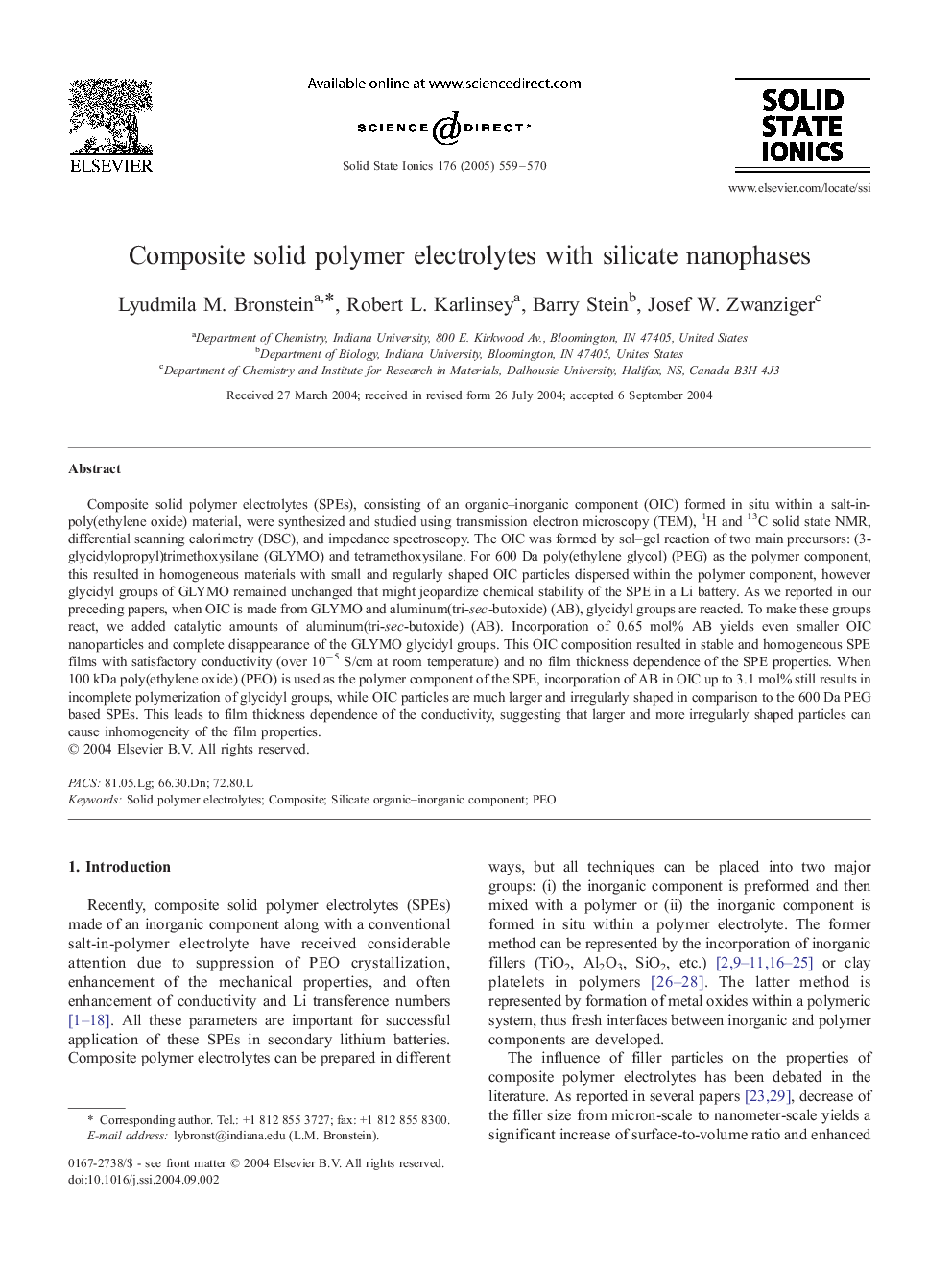| Article ID | Journal | Published Year | Pages | File Type |
|---|---|---|---|---|
| 9761761 | Solid State Ionics | 2005 | 12 Pages |
Abstract
Composite solid polymer electrolytes (SPEs), consisting of an organic-inorganic component (OIC) formed in situ within a salt-in-poly(ethylene oxide) material, were synthesized and studied using transmission electron microscopy (TEM), 1H and 13C solid state NMR, differential scanning calorimetry (DSC), and impedance spectroscopy. The OIC was formed by sol-gel reaction of two main precursors: (3-glycidylopropyl)trimethoxysilane (GLYMO) and tetramethoxysilane. For 600 Da poly(ethylene glycol) (PEG) as the polymer component, this resulted in homogeneous materials with small and regularly shaped OIC particles dispersed within the polymer component, however glycidyl groups of GLYMO remained unchanged that might jeopardize chemical stability of the SPE in a Li battery. As we reported in our preceding papers, when OIC is made from GLYMO and aluminum(tri-sec-butoxide) (AB), glycidyl groups are reacted. To make these groups react, we added catalytic amounts of aluminum(tri-sec-butoxide) (AB). Incorporation of 0.65 mol% AB yields even smaller OIC nanoparticles and complete disappearance of the GLYMO glycidyl groups. This OIC composition resulted in stable and homogeneous SPE films with satisfactory conductivity (over 10â5 S/cm at room temperature) and no film thickness dependence of the SPE properties. When 100 kDa poly(ethylene oxide) (PEO) is used as the polymer component of the SPE, incorporation of AB in OIC up to 3.1 mol% still results in incomplete polymerization of glycidyl groups, while OIC particles are much larger and irregularly shaped in comparison to the 600 Da PEG based SPEs. This leads to film thickness dependence of the conductivity, suggesting that larger and more irregularly shaped particles can cause inhomogeneity of the film properties.
Related Topics
Physical Sciences and Engineering
Chemistry
Electrochemistry
Authors
Lyudmila M. Bronstein, Robert L. Karlinsey, Barry Stein, Josef W. Zwanziger,
